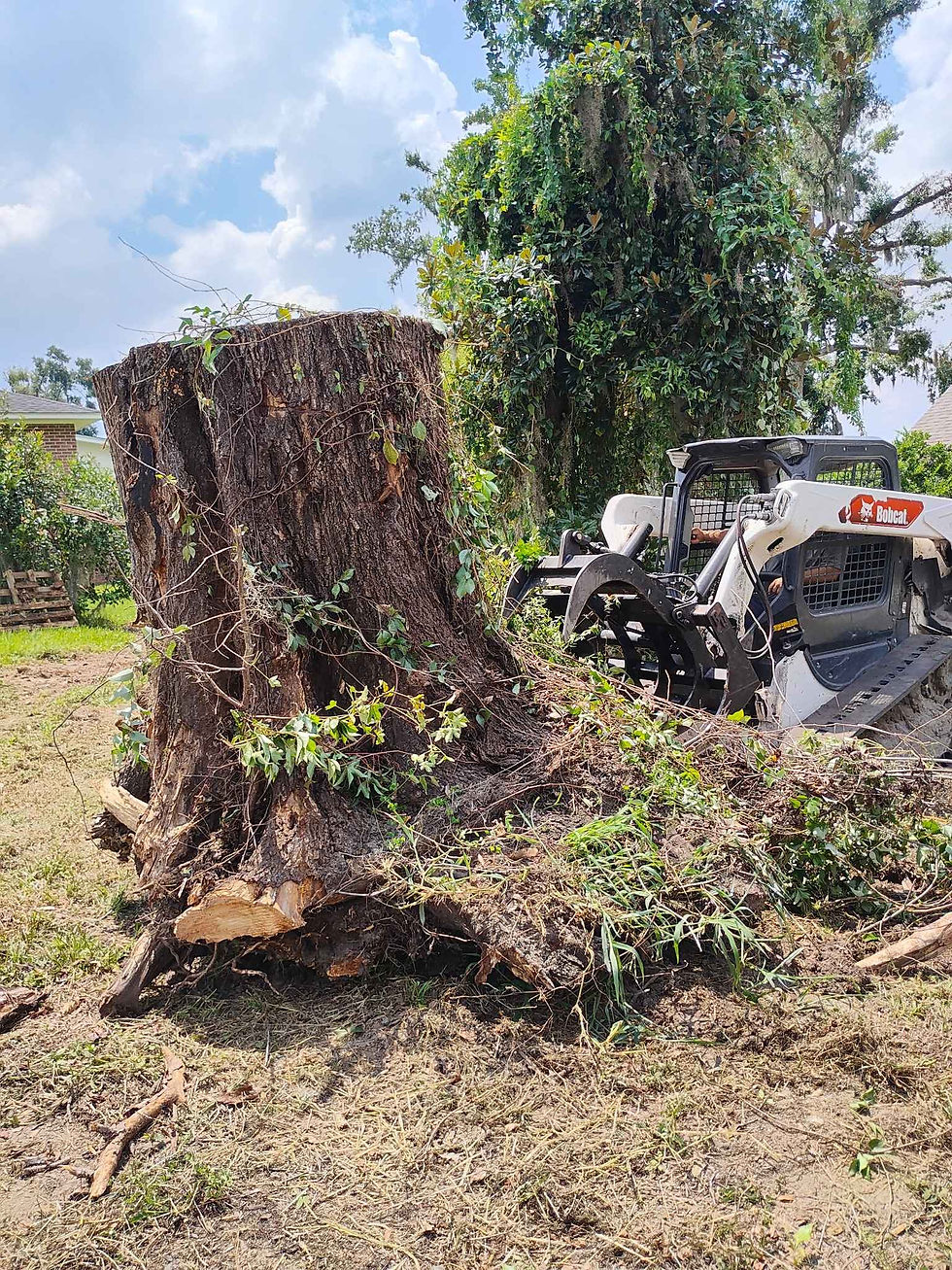Tree Trimming Service
Tree Trimming FAQs for Valdosta, GA Homeowners
At first glance, trimming your trees may seem straightforward—but once you dig in, you realize there’s a lot more to it. Here in South Georgia, tree trimming isn’t just about looks; it’s about safety, storm readiness, and keeping your landscape healthy.
Whether you’re wondering about the best time to trim your trees, worried about limbs near power lines, or curious about the difference between topping a tree and raising its canopy, this FAQ is here to give you clear answers. At Valdosta Tree Service, we’ve spent years caring for the oaks, pines, pecans, and other trees that define our area, and we’re proud to share our knowledge.
What is tree trimming?
Tree trimming is the process of selectively removing branches to improve tree health, shape, and safety. It helps control growth, reduces hazards, and keeps trees looking their best. Trimming also prevents interference with power lines, rooftops, and driveways.
While many people use “trimming” and “pruning” interchangeably, professionals often distinguish between them:
-
Trimming = shaping and managing growth.
-
Pruning = removing dead, diseased, or damaged wood for health.
We provide both services, and most homeowners simply call it “tree trimming.”
Why should I trim my trees?
There are several reasons:
-
Improve health and longevity
-
Reduce risks near homes, fences, and power lines
-
Remove storm-damaged branches before they fall
-
Let in more sunlight for lawns, gardens, or solar panels
-
Enhance curb appeal and keep your landscape looking sharp
-
Boost fruit production on fruit-bearing trees
Will trimming make my trees healthier?
Yes—when done correctly. Removing diseased limbs, thinning overcrowded branches, and eliminating hazards promotes airflow, reduces pests, and encourages stronger growth.
When is the best time to trim trees in South Georgia?
Winter and early spring are often the best times for most species, but timing depends on the tree. For example, fruit trees benefit from annual pruning, while hardwoods like oaks can often be trimmed every 2–3 years. Our certified experts can tell you the best schedule for your specific trees.
Can trimming improve the look of a tree?
Absolutely. Trimming can correct lopsided shapes, thin out heavy crowns, and enhance natural beauty. Proper cuts encourage balanced growth, making trees safer and more attractive.
Do young trees need trimming?
Yes. Regular pruning while young helps establish a strong structure, which means fewer problems later. Once trees mature, trimming becomes more about maintenance and safety.
What about fruit trees?
If you want more fruit and better harvests, pruning is essential. Removing weak or diseased branches allows healthy fruiting wood to thrive.
Can trimming help trees withstand storms?
Yes. South Georgia storms and hurricanes put a lot of stress on trees. Removing weak or overextended limbs makes your trees sturdier and reduces the chance of property damage during high winds.
What is “safety pruning”?
Safety pruning involves removing branches that could fall and cause injury or property damage, clearing limbs blocking roads or driveways, and preventing growth into power lines.
How often should I trim my trees?
It depends on the tree’s type, age, and location:
-
Young trees: every 1–3 years
-
Mature hardwoods: every 3–5 years
-
Fruit trees: annually
-
Evergreens: as needed
Is DIY tree trimming safe?
Small trees can sometimes be trimmed safely by homeowners, but large or tall trees should always be left to professionals. Working near power lines or high in the canopy is extremely dangerous without the right equipment and training.
Can trimming hurt my tree?
Improper trimming can damage or even kill a tree. Mistakes like over-pruning, topping, or making improper cuts can weaken structure and invite disease. That’s why hiring trained professionals is so important.
How much is safe to trim at once?
Never remove more than 25% of a tree’s foliage in a single season. Taking off too much at once stresses the tree and can cause long-term decline.
What about topping a tree?
We do not top trees. Topping weakens structure, encourages poor regrowth, and often leads to decay. Proper pruning achieves safer, healthier results without harming the tree.
How do I know if my tree was trimmed incorrectly?
Signs of bad trimming include:
-
Stubby branch ends
-
Bark tears
-
Uneven or lopsided growth
-
Excessive thinning (“lion-tailing”)
-
Dead or decaying spots developing later
Can a badly trimmed tree be saved?
Yes, with corrective pruning. Our experts can often restore balance and guide trees back to healthier growth patterns.
Does trimming actually help trees grow?
Yes. Proper trimming reduces stress, encourages strong structure, and supports long-term health. Think of it as giving your trees a fresh start to grow stronger.
Final Note: Professional vs. DIY
Tree trimming is more than just cutting branches—it’s about protecting your home, your property, and the long-term health of your trees. At Valdosta Tree Service, we have the knowledge, equipment, and experience to handle trimming safely and effectively.
If your trees look overgrown, storm-damaged, or hazardous, call the experts at Valdosta Tree Service for a free consultation.
- 01
- 02
- 03
- 04
- 05
- 06
Gallery of Work
Before-and-after tree trims, removals, and landscape transformations.















